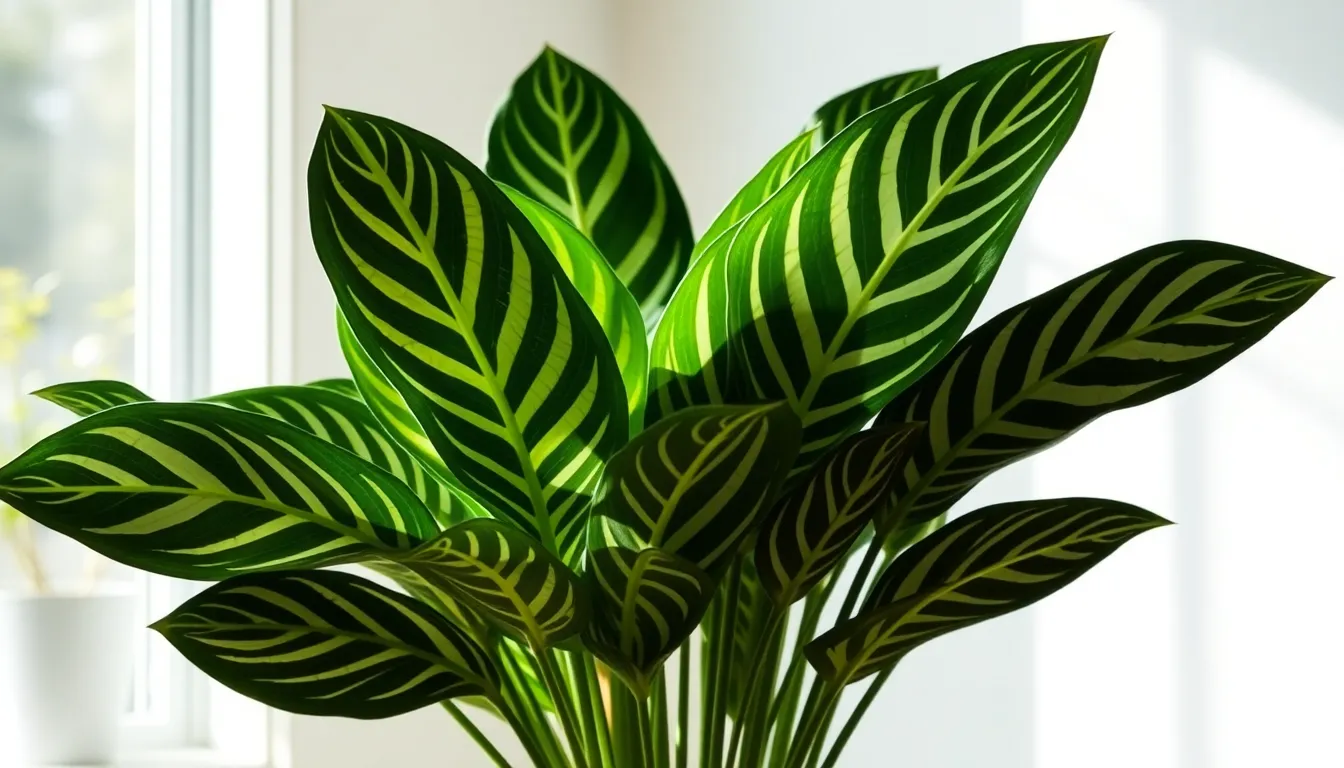If you’re on the hunt for a succulent that’s as charming as it is low-maintenance, the zebra plant might just steal your heart. With its striking striped leaves and quirky personality, this plant isn’t just a pretty face; it’s a resilient little gem that can thrive in a variety of conditions. Who wouldn’t want a plant that looks fabulous while demanding minimal attention?
Zebra Plant Care Succulent
Zebra plants, known scientifically as Haworthiopsis fasciata, thrive in various indoor environments. These succulents exhibit striking, banded green leaves that capture attention, making them a popular choice for plant enthusiasts. Proper care helps maintain their beauty and health.
Watering requires careful attention. Allow the soil to dry completely before the next watering. Overwatering can lead to root rot, a common issue with succulents. During the growing season, spring and summer, watering once every two weeks suffices. In winter, reduce frequency to once a month, as the plant enters dormancy.
Light conditions play a significant role in zebra plant care. Bright, indirect sunlight ensures optimal growth. Placing the plant near a window with filtered light promotes strong development. Direct sunlight can scorch the leaves, while too little light causes stretching and leggy growth.
Soil selection must be appropriate. A well-draining cactus mix provides essential drainage, preventing excess moisture. Adding perlite or sand enhances drainage further. This combination supports the plant’s healthy growth and reduces the chances of water-related issues.
Fertilizing isn’t mandatory but can be beneficial during the growing season. Applying a diluted, balanced fertilizer every four to six weeks encourages vigor and vibrant coloration. Avoid fertilizing during the dormant winter months.
Pest management keeps the zebra plant thriving. Common pests include mealybugs and aphids. Inspect the plant regularly and use a mild insecticidal soap if necessary. Addressing any pest issues promptly helps prevent infestations.
Temperature preferences should range from 65°F to 80°F (18°C to 27°C). Sudden temperature changes can stress the plant, leading to issues. Maintaining consistent warmth ensures that it flourishes.
Ideal Growing Conditions

Zebra plants flourish in specific environments that enhance their unique characteristics. Providing the right conditions ensures healthy growth and vibrant appearance.
Light Requirements
Bright, indirect sunlight suits zebra plants best. Exposure to direct sunlight can cause leaf burn. Aim for at least six hours of indirect light each day. A south-facing window often offers ideal conditions, but east or west-facing windows can also work well. If natural light is limited, consider using grow lights to supplement.
Temperature and Humidity
Temperature ranges of 65°F to 80°F (18°C to 27°C) support optimal zebra plant growth. Consistent warmth is essential for preventing stress. Avoid cold drafts and sudden temperature changes. While zebra plants tolerate low humidity, they thrive with average humidity levels found in most homes. If conditions are too dry, occasional misting can help boost humidity.
Watering and Feeding
Effective watering and proper feeding are vital for the health of the zebra plant. Maintaining the right balance ensures flourishing growth and vibrant foliage.
How to Water Effectively
Watering effectively involves checking the soil moisture before applying water. Allowing the top inch of soil to dry out is crucial; this prevents root rot. During the growing season, approximately every two weeks suffices, while frequency should decrease in winter months. Watering thoroughly until excess drains from the bottom aids moisture retention without over-saturating the plant. Observing the plant’s condition also helps; if leaves appear wrinkled, it indicates the need for more water.
Recommended Fertilizers
Fertilizers can enhance the growth of the zebra plant during the active growing season. A balanced, water-soluble fertilizer with an equal ratio of nitrogen, phosphorus, and potassium works best. Using fertilizers rated at 10-10-10 or similar offers necessary nutrients. Fertilizing every four to six weeks provides adequate nourishment without overwhelming the plant. Diluting the fertilizer to half strength reduces the risk of root burn, promoting healthy growth. Regular inspections can reveal whether the plant responds well to added nutrients, guiding future feeding practices.
Soil and Potting
Selecting the right soil and potting techniques is essential for zebra plants. These factors significantly influence their growth and overall health.
Best Soil Mix for Zebra Plants
A well-draining cactus mix is ideal for zebra plants. This mix typically contains components like coarse sand, perlite, and pine bark, which promote aeration. Using a blend that retains moisture without becoming soggy supports the roots and prevents rot. Consider using a commercial succulent mix if creating a custom blend seems daunting. Opt for a pH level between 6 and 7, which suits the zebra plant’s preferences.
Potting Tips and Techniques
Choosing the appropriate pot is crucial for the zebra plant’s health. Select a container with drainage holes to allow excess water to escape. Repotting every two to three years helps rejuvenate the soil and provides space for growth. Use fresh soil during repotting to ensure adequate nutrients. Position the plant at the same depth it previously occupied to maintain stability. Water lightly after repotting to settle the soil and promote root establishment. Regular inspection of pot conditions allows for timely adjustments, ensuring the plant thrives in its new environment.
Common Pests and Problems
Zebra plants can attract pests and face specific issues. Identifying problems early ensures they stay healthy.
Identifying Pests
Common pests affecting zebra plants include mealybugs, aphids, and spider mites. Mealybugs appear as white, cotton-like clusters on the leaves and stems. Aphids, small and often green or black, cluster on new growth, sucking sap and causing leaf curling. Spider mites thrive in dry conditions, producing fine webbing that indicates severe infestations. Regular inspection of leaves, stems, and soil can help catch these pests before they spread.
Solutions for Common Issues
Treating pests promptly ensures zebra plants remain vibrant. Insecticidal soap or neem oil effectively controls mealybugs and aphids. Spraying the affected areas thoroughly is crucial for effective treatment. For spider mites, increasing humidity helps deter their growth while cleaning leaves with a damp cloth removes existing webs. Addressing issues like root rot requires immediate action by repotting in well-draining soil and reducing watering frequency. Maintaining consistent care aids in preventing future infestations.
Conclusion
The zebra plant stands out as a stunning and resilient succulent that can enhance any indoor space. With its unique striped leaves and low-maintenance requirements, it’s perfect for both novice and experienced plant enthusiasts. By following the care guidelines discussed, including proper watering, light conditions, and pest management, anyone can enjoy the beauty of this plant for years to come.
Regular attention to its needs ensures vibrant growth and minimizes potential issues. With the right environment and care, the zebra plant can thrive and become a cherished part of any plant collection. Embracing this delightful succulent is a rewarding experience that brings a touch of nature indoors.





